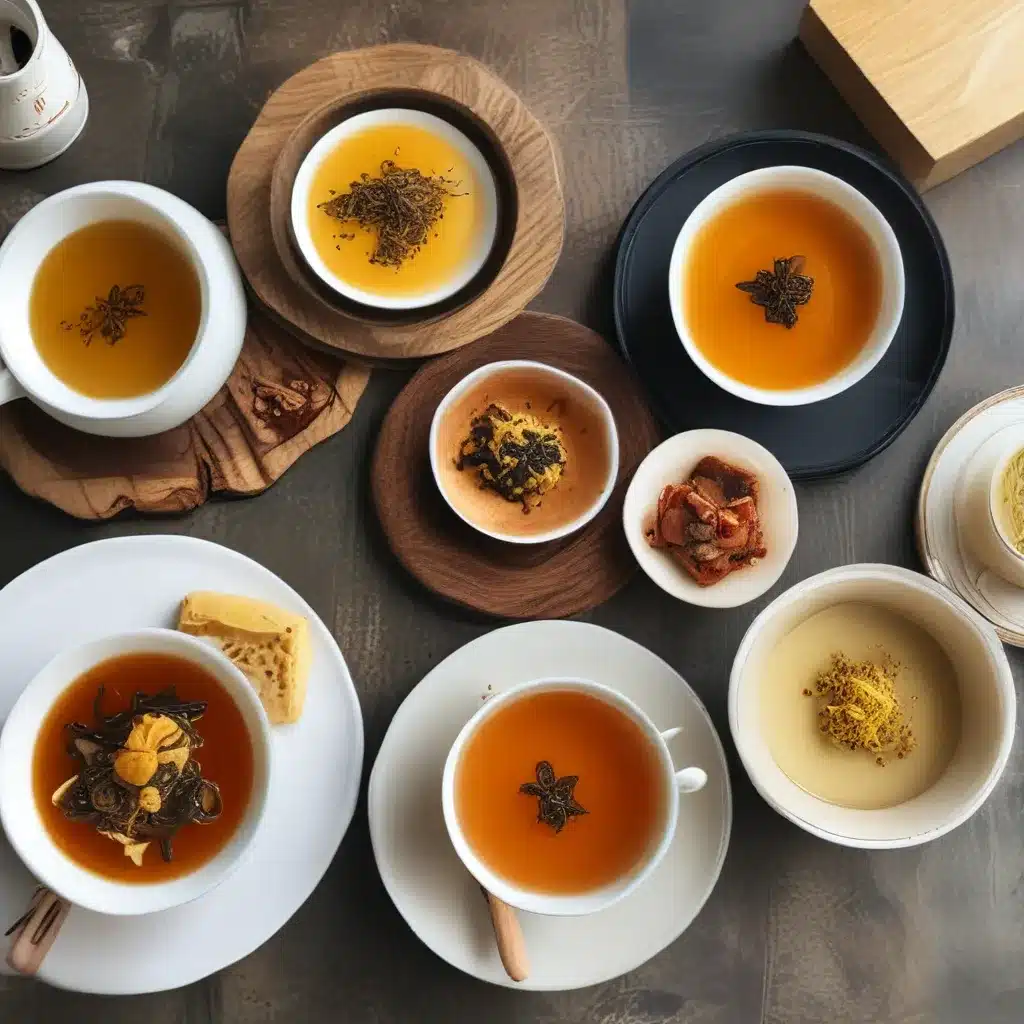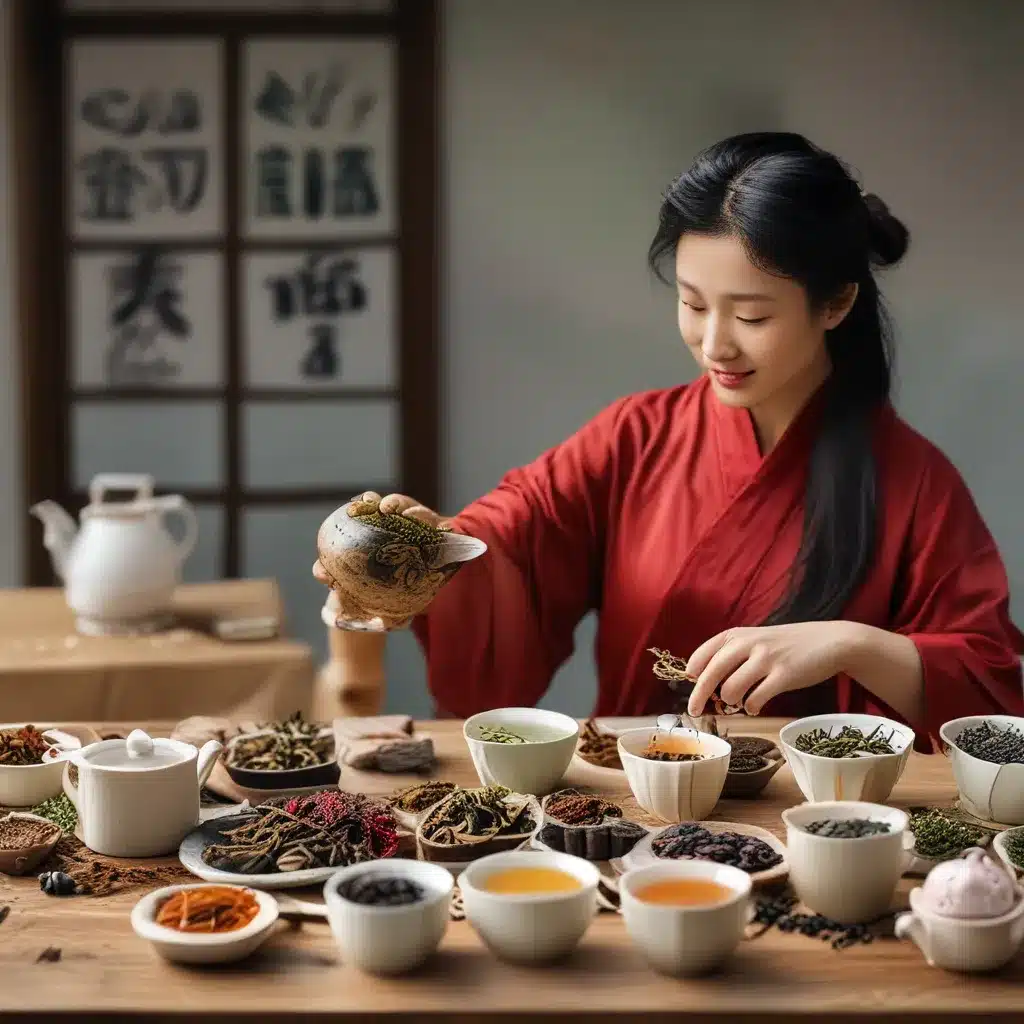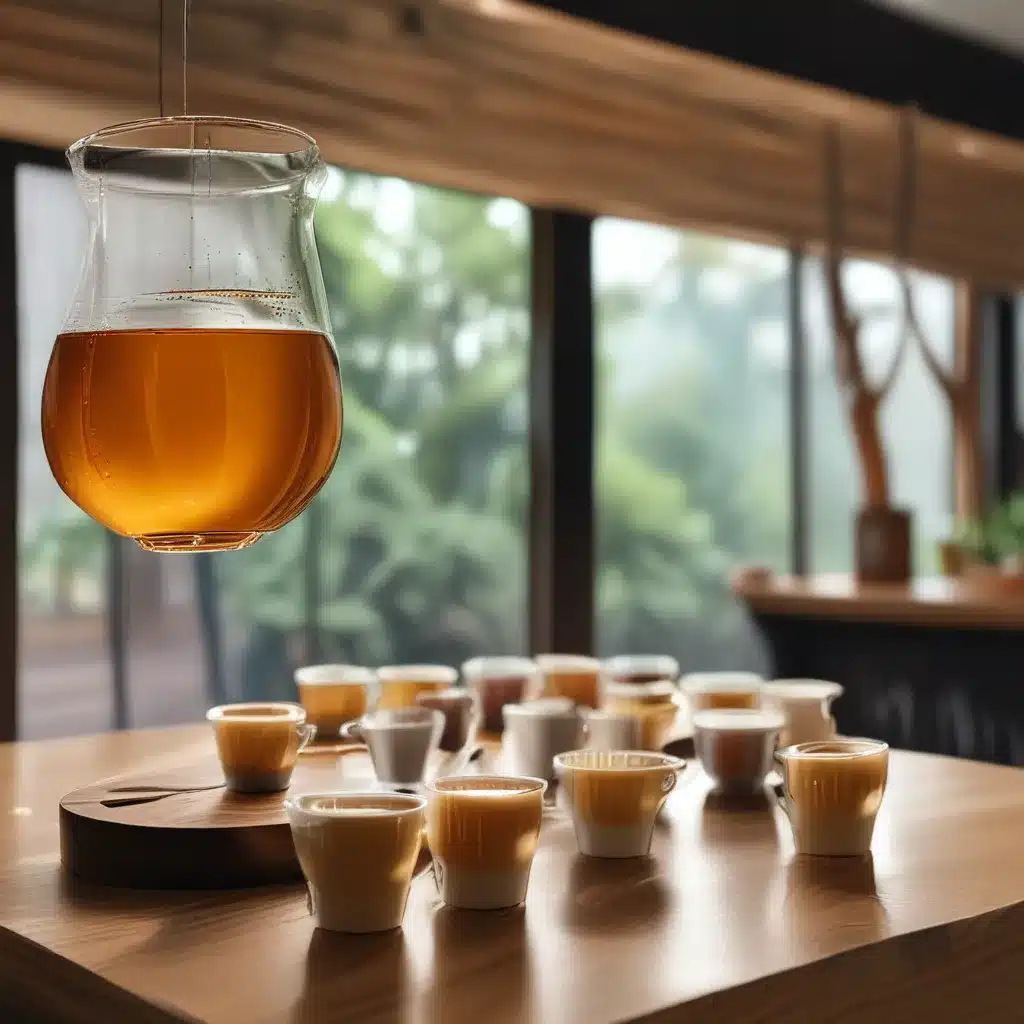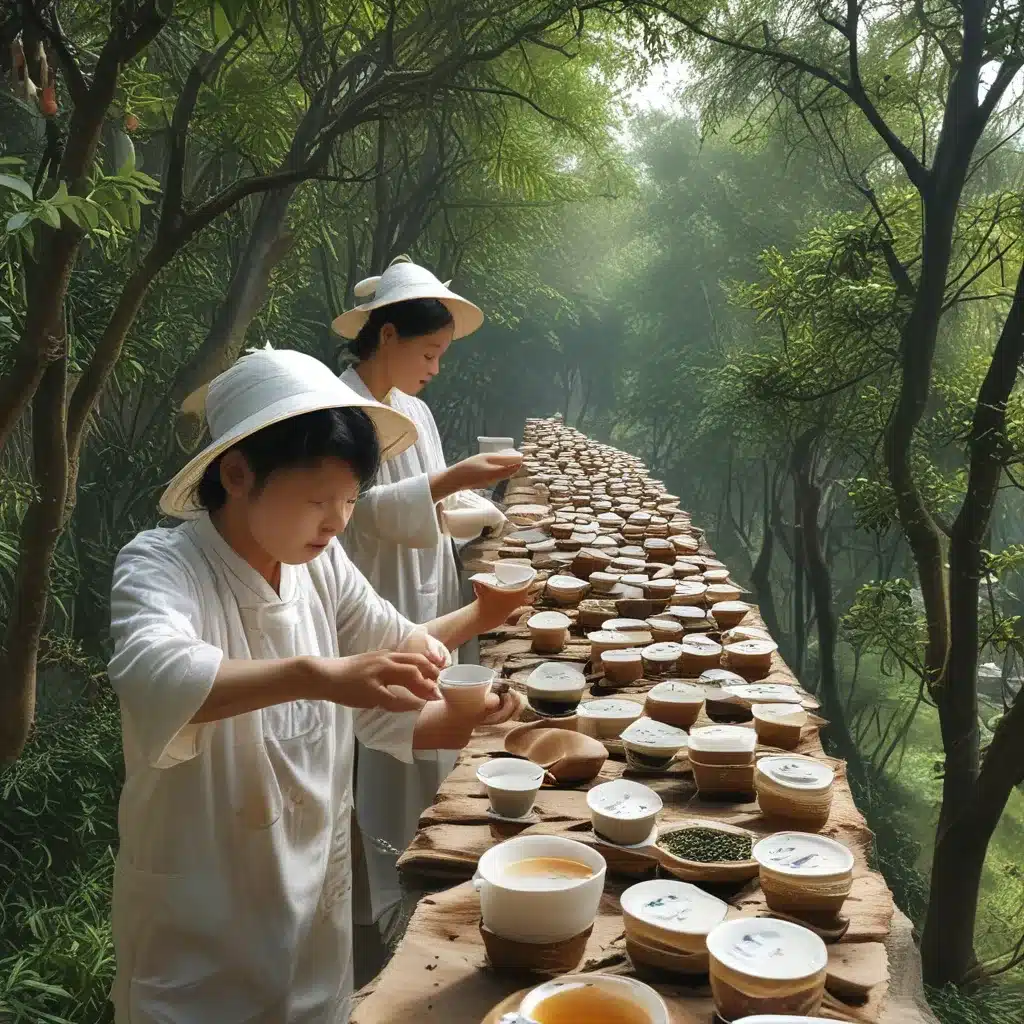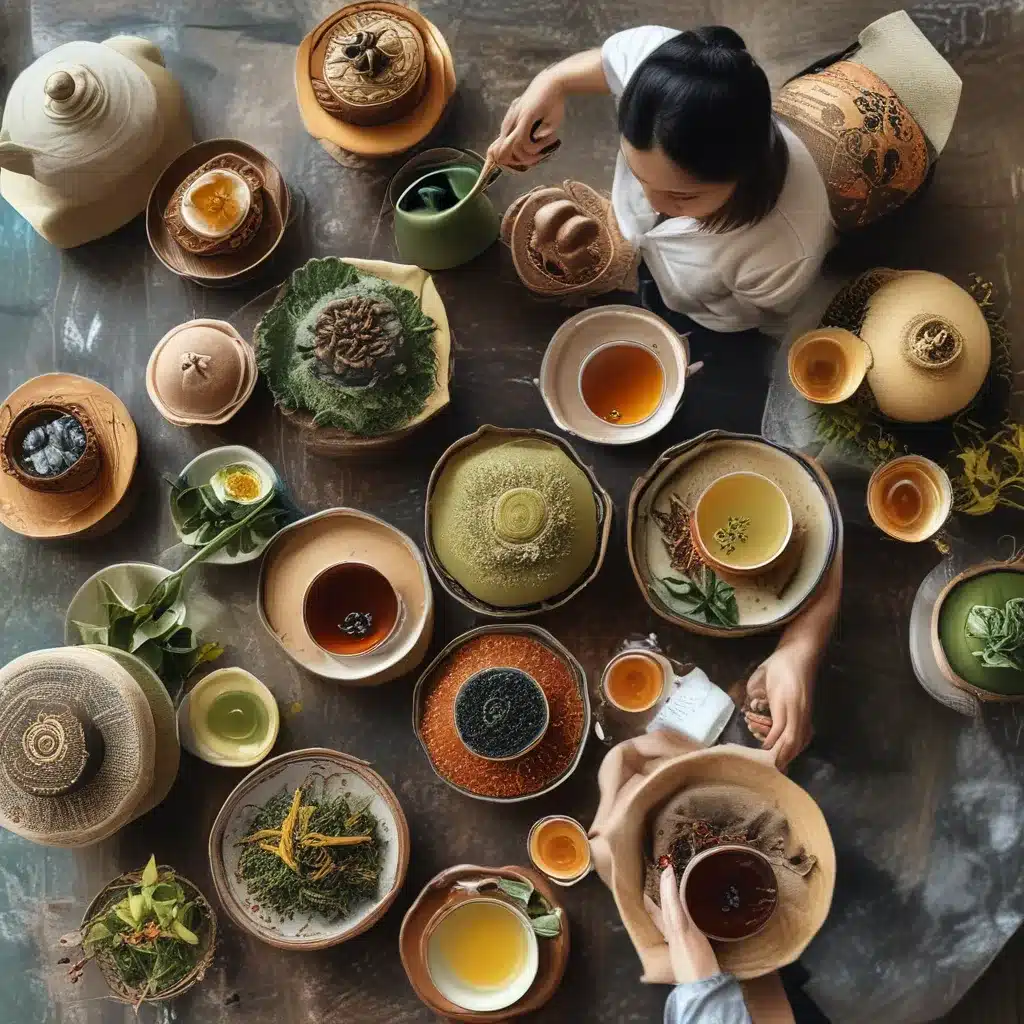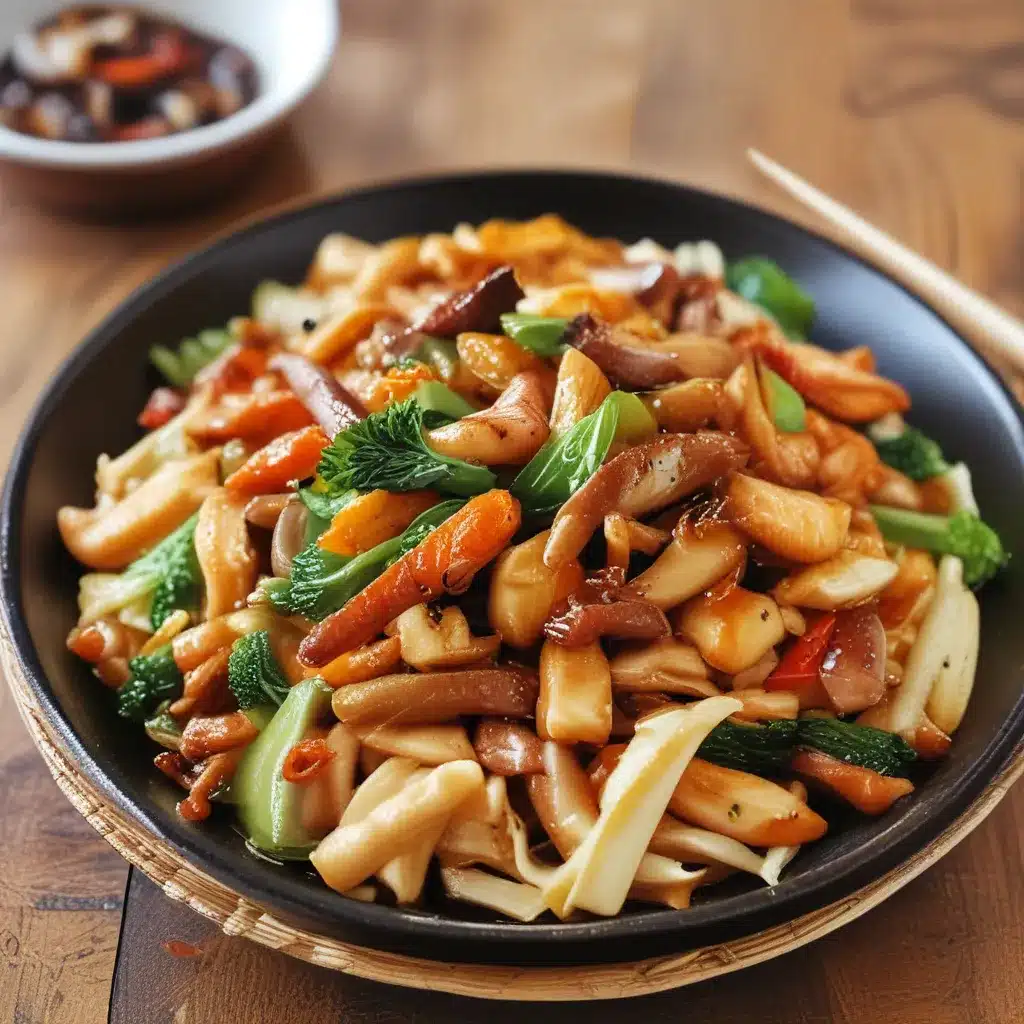
The Sizzle and Crunch of Stir-Fry Mastery
Picture this: you’re standing in front of a piping hot wok, the sizzle of oil and the aroma of fresh ingredients filling the air. With a flick of your wrist, you toss the vibrant green vegetables into the scorching heat, watching them transform into a flavor-packed medley. Welcome to the world of Shanghai-style stir-fries, where the wok is the key to unlocking the secrets of China’s most beloved culinary tradition.
As the chef and head recipe developer for the One Dragon Restaurant, I’ve made it my mission to master the art of the stir-fry. Through countless hours spent in the kitchen, perfecting my technique and experimenting with a myriad of ingredients, I’ve come to appreciate the nuanced complexity of these lightning-fast, flavor-packed dishes.
The Science and Soul of Stir-Frying
At the heart of a great stir-fry lies a fundamental understanding of the science behind this cooking method. As I’ve learned from reading Diversivore’s in-depth guide to stir-frying, there are three key principles that separate a mediocre stir-fry from a truly exceptional one:
-
Preparation is Key: Before the wok hits the heat, you need to have all your ingredients prepped and ready to go. Chopping, dicing, and measuring out your components in advance ensures a seamless, lightning-fast cooking process.
-
Heat is Everything: The wok needs to be ripping hot – we’re talking temperatures in the 140-165°C range. This intense heat is what creates the Maillard reactions that give stir-fries their signature wok hei, or “breath of the wok” – that elusive, smoky-sweet flavor that separates them from other cooking methods.
-
Portion Control: Overloading the wok is a recipe for disaster. You need to cook in small batches to ensure even browning and prevent the ingredients from steaming or braising instead of sizzling.
Mastering these principles takes time and practice, but the payoff is well worth it. When you nail the balance of heat, preparation, and portion size, the results are nothing short of magical. Vibrant, tender-crisp vegetables marry with fragrant aromatics and a perfectly balanced sauce, creating a symphony of flavors that dance on the tongue.
Exploring the Flavors of Shanghai
As I’ve delved deeper into the world of Shanghai cuisine, I’ve been continually amazed by the sheer diversity of stir-fry preparations and flavor profiles. While the foundational elements – the high heat, the quick cooking, the interplay of textures – remain constant, the specific ingredients and seasonings used can vary widely, each offering a unique taste experience.
One of my personal favorites is the classic choy sum stir-fry. The tender stems and delicate leaves of this cruciferous green provide a perfect canvas for the rich, savory notes of garlic, ginger, and soy sauce. The key is to let the wok do its magic, searing the choy sum just until it’s vibrant and still maintains a satisfying crunch.
But choy sum is just the tip of the iceberg when it comes to Shanghai’s stir-fry repertoire. Bok choy, gai lan, and snow peas – these are just a few of the versatile Chinese greens that can be transformed into wok-tossed wonders. Each variety has its own distinct flavor profile and textural qualities, allowing for endless flavor combinations.
For the adventurous eater, Shanghai cuisine also offers a tantalizing array of unusual stir-fry ingredients. Stir-fried lotus root, for example, provides a delightful crunch and a subtle, earthy sweetness. And who could forget the umami-packed punch of stir-fried pea shoots or the bright, herbal notes of stir-fried chrysanthemum greens?
Mastering the Wok, One Dish at a Time
As I’ve delved deeper into the art of stir-frying, I’ve come to appreciate the sheer versatility of this cooking method. With a few simple tweaks to the seasonings and ingredients, an ordinary vegetable stir-fry can be transformed into a flavor explosion.
Take, for instance, the addition of a splash of Shaoxing wine or a dash of Sichuan peppercorns. These seemingly small adjustments can elevate a dish, infusing it with complex, nuanced flavors that tantalize the senses. Or consider the role of aromatics – a generous helping of minced garlic and ginger can instantly elevate a stir-fry, lending it a fragrance and depth that’s simply unattainable through any other cooking technique.
And let’s not forget the importance of balance. As I’ve learned, the key to a successful stir-fry is to strike the perfect harmony between the various flavor components – the salty soy sauce, the sweet notes of sugar or oyster sauce, the toasted richness of sesame oil. It’s a delicate dance, but when executed with precision, the result is pure culinary magic.
Unlocking the Secrets of the Wok
Of course, mastering the art of the stir-fry isn’t just about the flavors – it’s also about the technique. And as any seasoned wok-wielder will tell you, maintaining and seasoning your trusty cooking vessel is a crucial part of the equation.
As the Diversivore guide so eloquently explains, a properly seasoned wok is the foundation for stir-fry success. The key is to build up a resilient, non-stick patina through repeated use and careful maintenance. This not only helps food release easily from the surface but also imparts a subtle, smoky depth of flavor that simply can’t be replicated with any other cooking tool.
Of course, keeping a wok in pristine condition is easier said than done. It’s a delicate balance of avoiding harsh scrubbing, properly drying the surface, and seasoning it with the right oils. But with time and practice, it becomes second nature – almost like a dance, where each movement of the wok is a carefully choreographed step toward culinary mastery.
Embracing the Spirit of Shanghai Stir-Fries
As I reflect on my journey into the world of Shanghai stir-fries, I’m struck by the profound sense of connection I feel to this centuries-old cooking tradition. It’s not just about the flavors or the techniques – it’s about the spirit that infuses every sizzling, wok-tossed dish.
There’s a certain urgency and energy to stir-frying that I find absolutely captivating. The relentless dance of the wok, the lightning-fast movements, the intense heat – it’s as if the dish itself is alive, pulsing with vitality and begging to be devoured. And when you nail the execution, when every element comes together in perfect harmony, it’s like experiencing a culinary epiphany.
But beyond the technical mastery, there’s also a deep sense of community and tradition that resonates with me. These stir-fries, after all, are the culinary heartbeat of Shanghai, passed down through generations and imbued with the flavor of a city that’s constantly evolving, yet fiercely proud of its roots.
So as I continue my exploration of Shanghai’s stir-fry wonders, I do so with a profound sense of gratitude and a deep respect for the history and culture that have shaped these magnificent dishes. Each bite is a revelation, a symphony of textures and flavors that transports me to the bustling streets of this vibrant city. And with every toss of the wok, I feel a little bit closer to unlocking the secrets of this timeless culinary art form.

